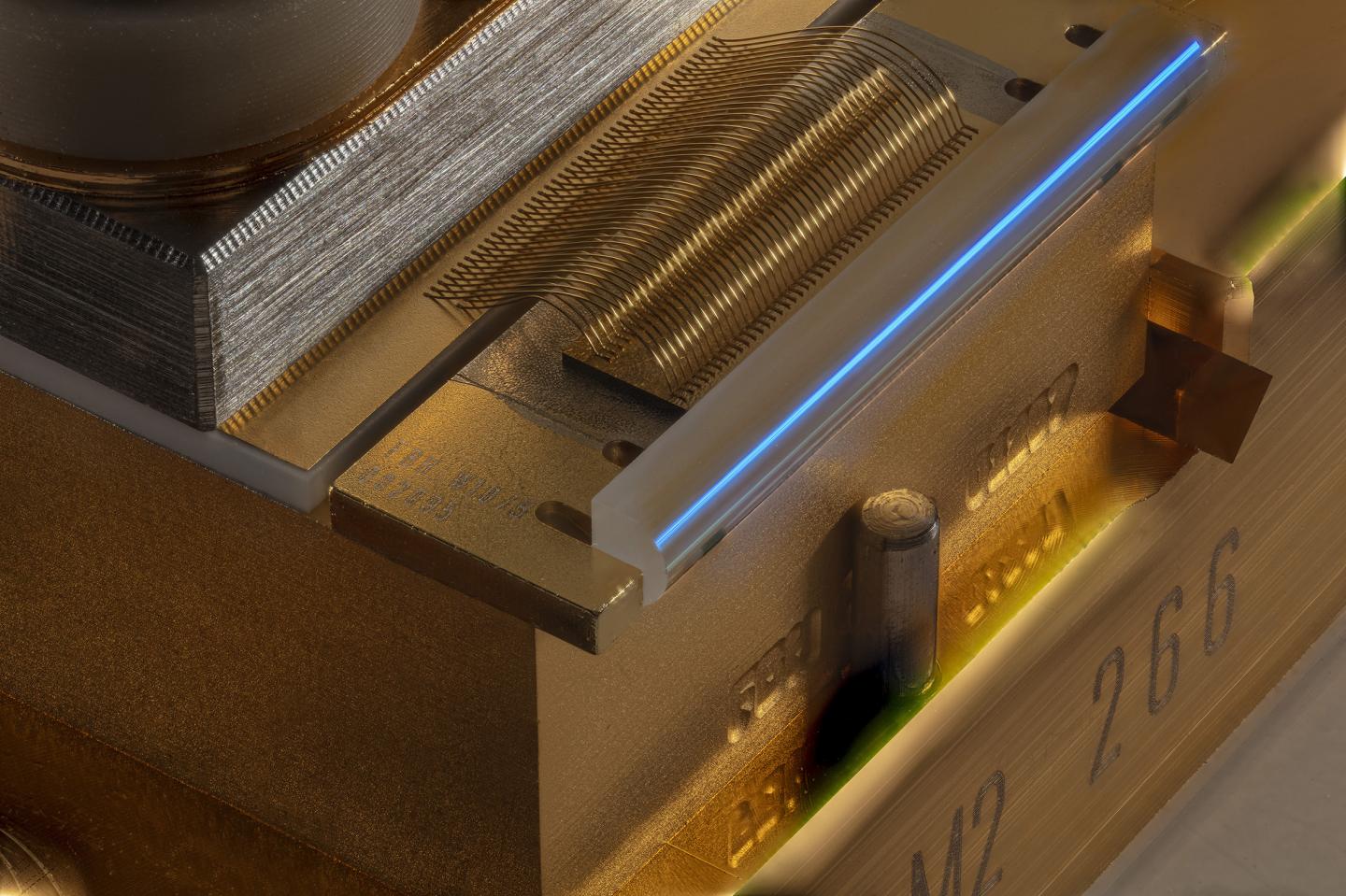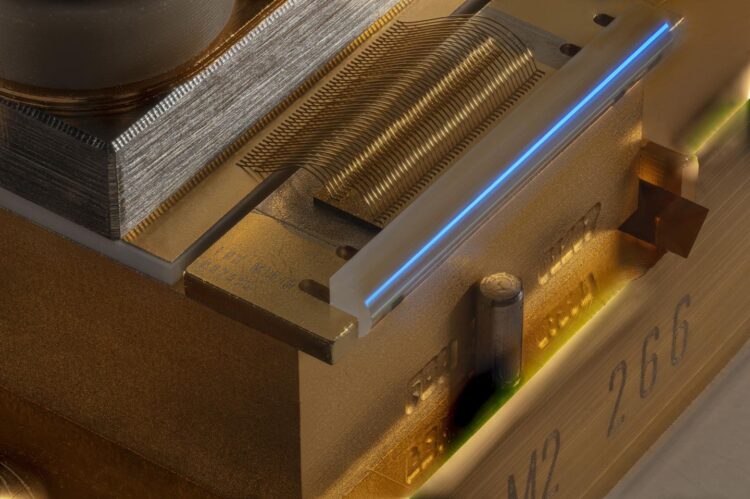
Credit: © FBH/schurian.com
The Franco-German satellite MERLIN is due to be launched into space in 2025 to measure the methane concentration in the Earth’s atmosphere – a milestone in climate research. Important components of the LiDAR measurement system come from the Ferdinand-Braun-Institut in Berlin, which has now delivered the required laser diode benches to the project partner.
The MERLIN mission aims to better understand the effect of the greenhouse gas methane on global warming. A radar-like laser system on the satellite measures natural and anthropogenic methane emissions: The Integrated Path Differential Absorption (IPDA)-LiDAR sends laser light to the Earth’s surface and analyses the backscattered signal.
The Ferdinand-Braun-Institut (FBH) has therefore developed and manufactured extremely reliable laser diode benches (LDBs) for the MERLIN climate satellite. Six of these space-qualified LDBs have now been integrated into three pump modules from the Fraunhofer Institute for Laser Technology (ILT) and delivered to the project partner ready for use. The modules generate the necessary pump energy for the oscillator of a Nd:YAG solid-state laser and are integrated into the LiDAR system by the ILT. The solid-state laser, in turn, serves as the light source for a tunable optical parametric oscillator (OPO) that generates double pulses with different wavelengths in the infrared range around 1.6 micrometers. One of these pulses is strongly absorbed by methane, the other is not. This way, the methane content can be determined from the ratio of intensities of the backscattered light.
Robust, space-qualified diode laser technology
The centerpiece of the pump modules are the laser diode benches supplied by the FBH. Each LDB generates a pump power of over 60 watts in double pulses with a repetition rate of 20 hertz and 150 microsecond pulse width. Laser diode mini-bars are an essential component of the LDB and ensure efficient light generation. Thanks to the fast axis collimation lenses integrated in the LDB, the laser beam can be coupled into an optical fiber with a minimum of loss. Two of these LDBs are integrated into each module and provide a joint pump power of 120 watts. The diode laser, fast axis collimation and LDB technology was first comprehensively tested at FBH and confirmed as being suitable for space applications. Subsequently, the laser diode benches were qualified by the European Space Research and Technology Center ESTEC in the Netherlands. The extensive life cycle tests performed by ESTEC showed that the power degrades only minimally even after a long operating time of more than four billion pulses. The scientific team is therefore confident that the MERLIN measuring system will function failure-free even under space conditions. The successful delivery of LDBs for the MERLIN mission has been made possible by the many years of comprehensive know-how accumulated at the FBH in the development of space-qualified diode lasers. FBH technology will thus contribute to the detailed investigation of important and up to now little-known sources of global warming on the climate satellite – a milestone in European climate research.
As part of the MERLIN satellite project, a collaboration between DLR RfM and CNES, the Fraunhofer ILT is developing the beam source – the “Laser Optical Assembly” – of the laser transmitter under contract to Airbus DS GmbH. The work is being carried out on behalf of the Federal Ministry of Economics and Energy BMWi under grant number 50EP1601.
###
About the FBH
The Ferdinand-Braun-Institut, Leibniz-Institut fuer Hoechstfrequenztechnik (FBH) researches electron-ic and optical components, modules and systems based on compound semiconductors. These devic-es are key enablers that address the needs of today’s society in fields like communications, energy, health, and mobility. Specifically, FBH develops light sources from the visible to the ultra-violet spectral range: high-power diode lasers with excellent beam quality, UV light sources and hybrid laser sys-tems. Applications range from medical technology, high-precision metrology, and sensors to optical communications in space and integrated quantum technology. In the field of microwaves, FBH devel-ops high-efficiency multi-functional power amplifiers, and millimeter wave frontends targeting energy-efficient mobile communications as well as car safety systems. The FBH has a strong international reputation and ensures rapid transfer of technology by working closely with partners in industry and research. The institute has a staff of 315 employees and a budget of 40.4 million euros. It is part of the Forschungsverbund Berlin e.V., a member of the Leibniz Association and part of »Research Fab Microelectronics Germany«.
http://www.
Media Contact
Petra Immerz
[email protected]
Original Source
https:/





